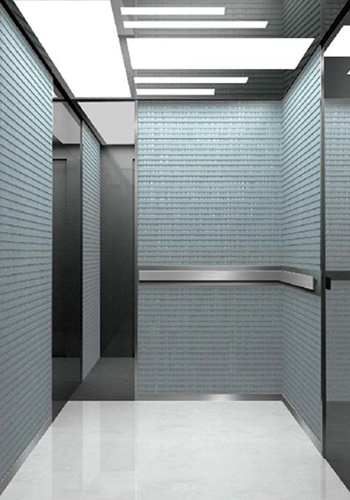Why does the elevator shake and vibrate when it is running (2)
When the elevator is running, there are various reasons for jitter and vibration, which may be caused by the failure of a certain component, or may be caused by changes in the overall performance of the system, or may even be the result of the combined effect of the two. In the article "Why does the elevator shake and vibrate when it is running (1)", the editor introduced ten reasons that cause the elevator to shake, and these reasons are also related to the elevator machinery.

1. Electrical aspects
1. The fluctuation of the traction torque of the traction machine, poor torque adjustment during startup, too small torque, and too large torque will cause the elevator car to shake.
2. The impedance of the main drag circuit is not well debugged, and it will vibrate abnormally when running at slow speed.
3. The tachogenerator is faulty and the feedback is unstable.
Second, the quality of elevator products
1. The bearing clearance of the traction sheave and guide sheave of the main engine is large, the dynamic balance of the traction sheave and the guide sheave itself is not good, the bearings in the traction machine or the gear box are not good, and the concentricity between the worm gear of the traction machine and the motor shaft is out of tolerance Periodic vibration can occur at any time, resulting in elevator running jitter. Therefore, the product quality and assembly quality of the traction sheave and guide sheave should be improved first, and the defective bearings should be replaced in time to eliminate periodic jitter.
2. The stiffness of the rope head rod spring is different, and the elastic force of the spring is different under the same amount of compression. The stiffness of the rope head spring must be moderate and match its load capacity. If the stiffness is too large or too small, the vibration reduction effect is not good.
3. Poor elevator installation
Poor installation of elevator guide rails is mainly due to the verticality, spacing, guide rail joints and joint steps of the guide rails exceeding the error range specified in the national standard. During the installation process, local distortion of the guide rail caused by poor product protection, pits or welding scars on the working surface of the guide rail, all of which can cause vibration and noise when the elevator car runs up and down.
4. Improper elevator debugging
1. Improper adjustment of the gap between the guides, improper adjustment of the parallelism of the guides, and excessive or small expansion and contraction of the guides will all cause the elevator to shake.
2. The fluctuation of the traction torque of the main engine is the excitation source of the elevator vibration. When starting, if the torque is not adjusted properly, if the torque is too small, it will be reversed, and if the torque is too large, it will lead to jitter. Vibration can be reduced by adjusting the torque or acceleration curve at the moment of starting, thereby improving the comfort of starting.




